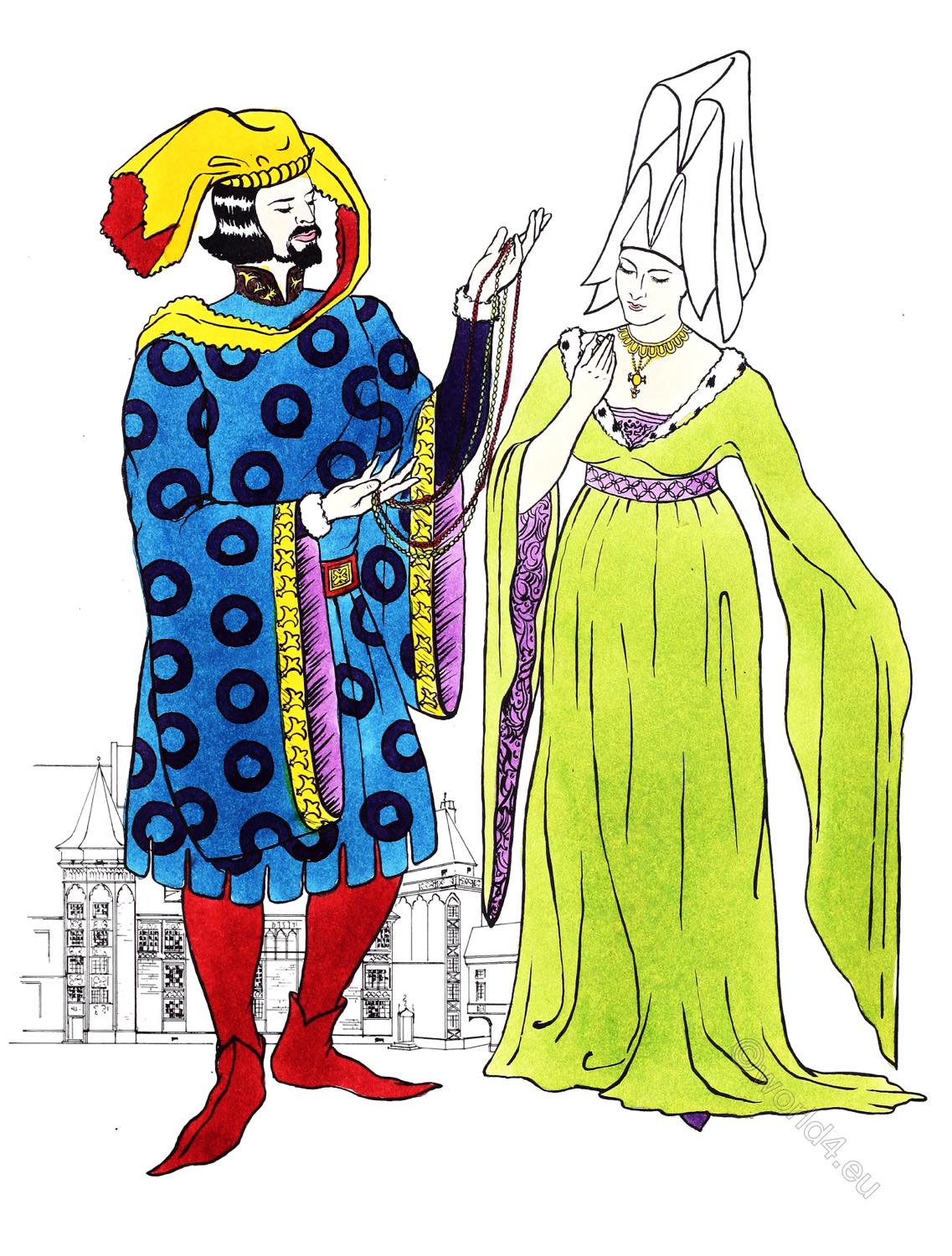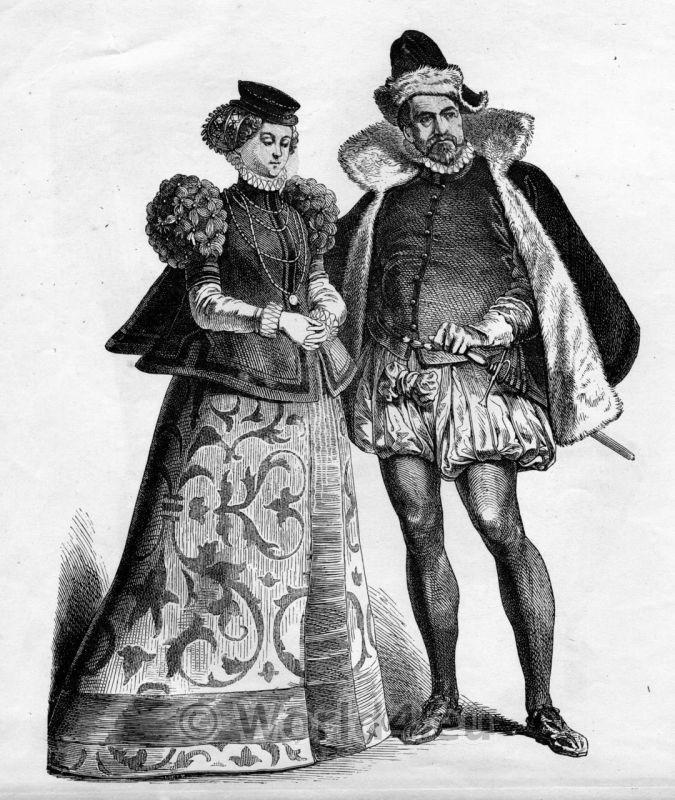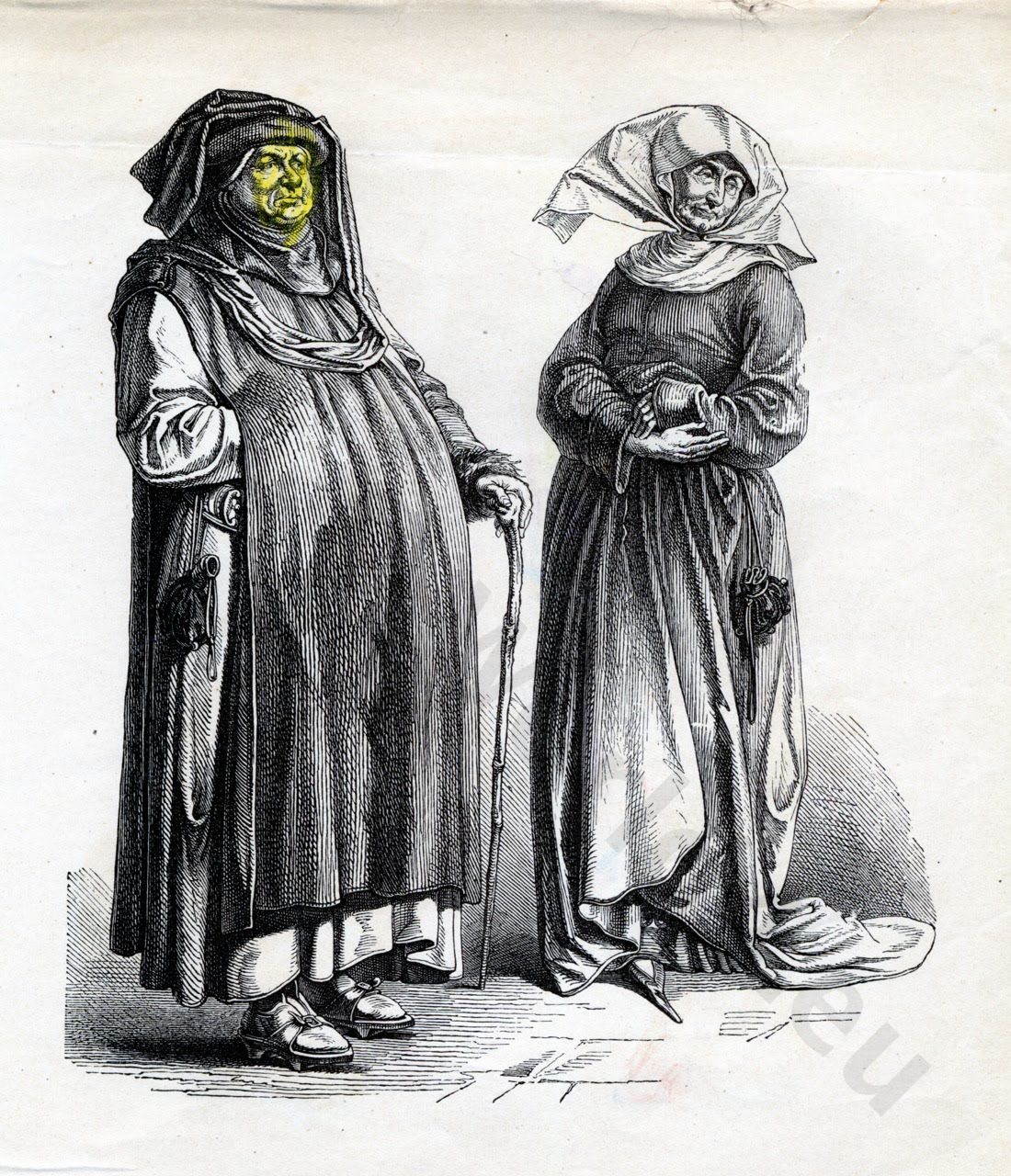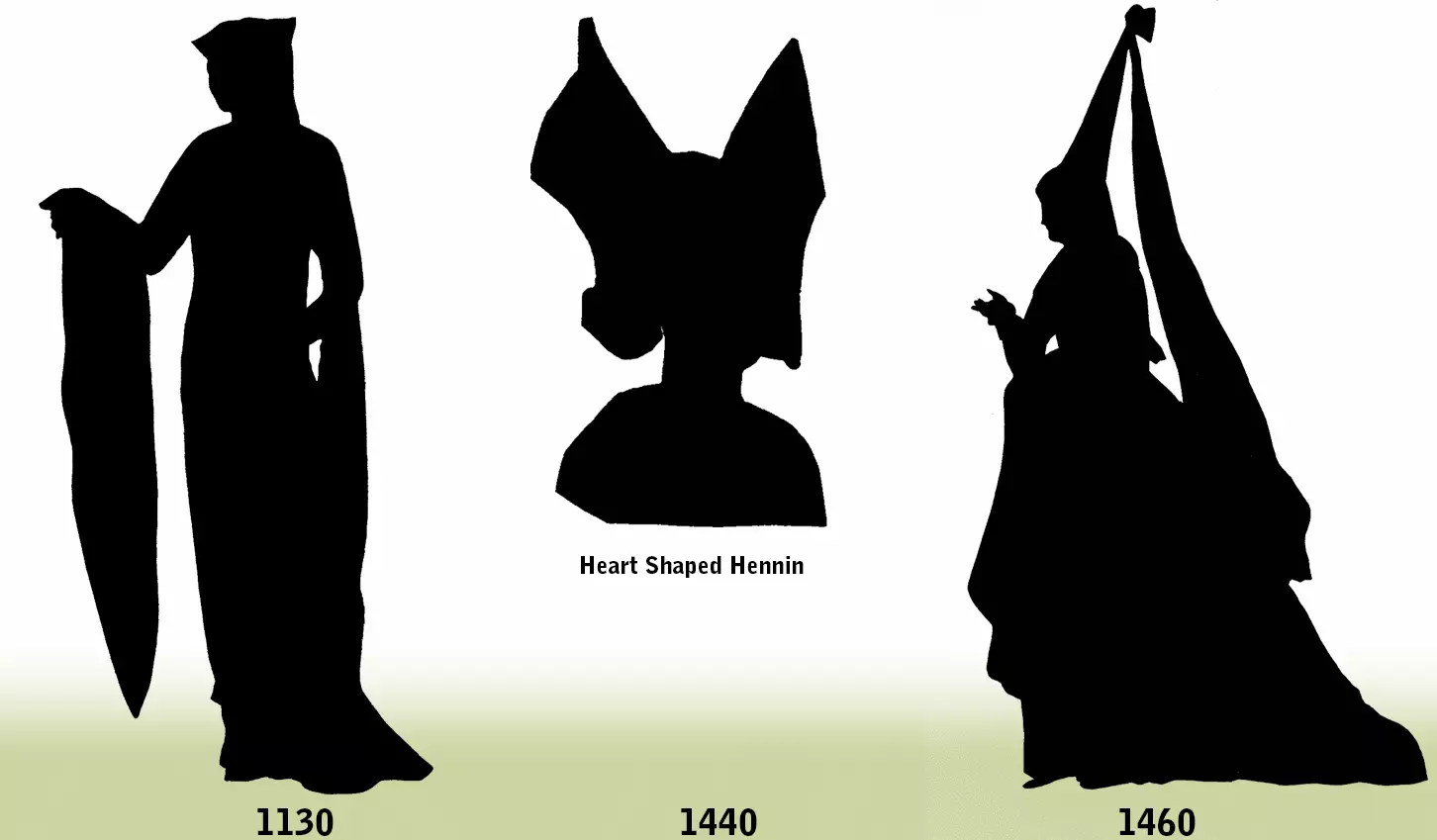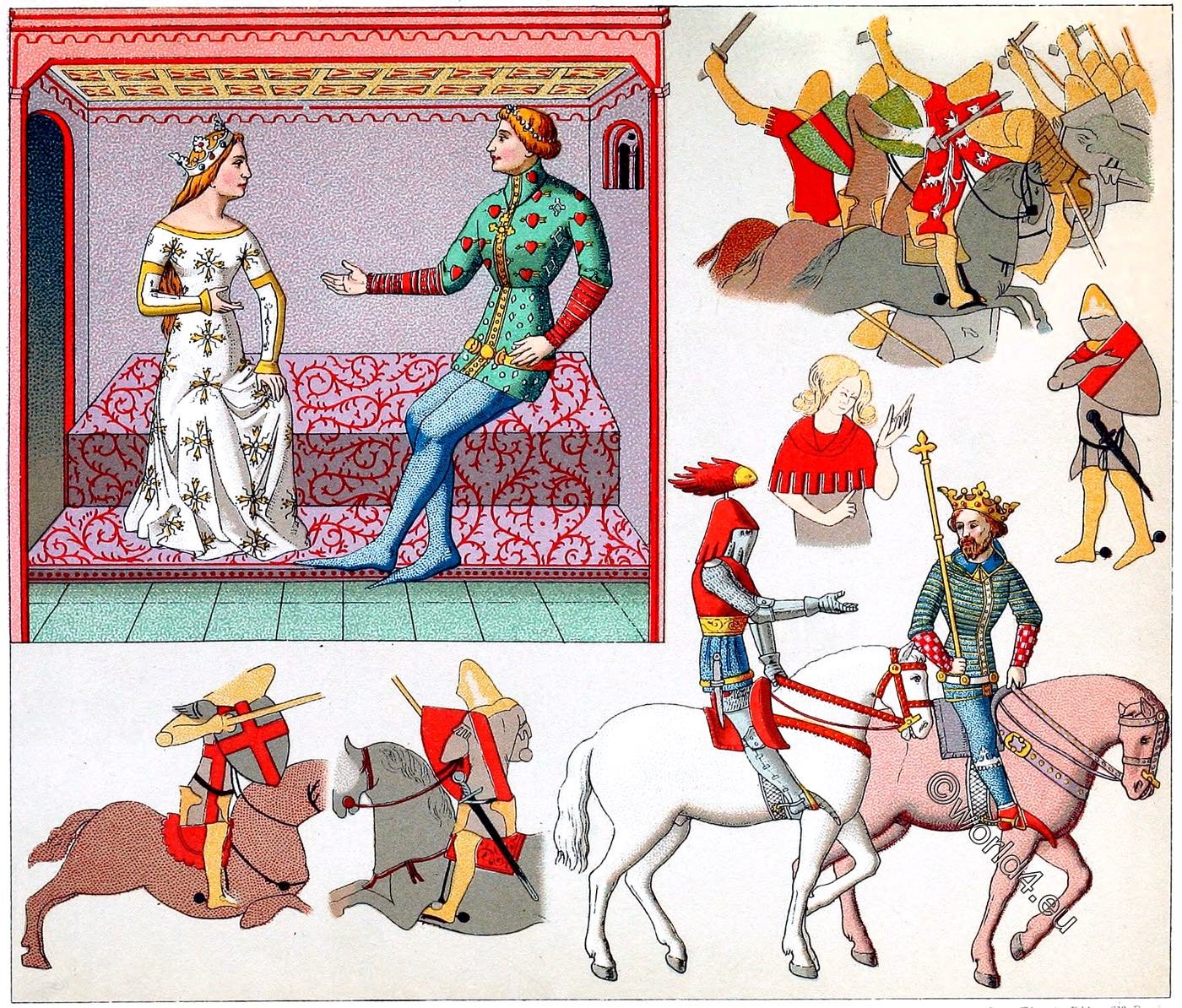
6, 7, 1,
3, 2,
4, 5, 8, 9,
EUROPA. MIDDLE AGES. CIVIL AND MILITARY COSTUMES.
Fashion of the Middle Ages in the 12th and 13th century. Courtly gallantry. Pointed shoes. Knights and armament. Helmets, crest.
The fighter group no. 1 and the figures 2, 3, 4, 5 are reproduced after watercolours, which A. Dauvergne based on murals in the castle of Saint Floret in Auvergne, dating from the end of the 12th and beginning of the 13th century. The watercolours belong to the French artist. Ministry of Education.
The numbers 6, 7, 8, 9 are borrowed from an Italian manuscript of the National Library in Paris “The Novel of St. Graal” (Ms. 6964).
Courtly gallantry. The two figures 6 and 7 are characteristic examples of the costume in the middle of the 14th century, the so-called “narrow costume”, which, coming from France, spread over Italy and Germany and remained the dominant one throughout the century.
The custom of shearing off one’s beard appeared at the end of the 12th century, while the fashion of pointed shoes appeared already at the end of the 11th century to persist, with a brief interruption, until the end of the 15th century, after which it degenerated into the greatest extravagance.
The Lord’s tightly fitting doublet with “hanging belt” is embroidered with red hearts, which of course had a symbolic meaning in the age of courtly gallantry. As the scene of our miniature takes place in the house, the gentleman has taken off the wooden sandals that were worn under the tights in the street. How the shape of the pointed shoes or stockings was recorded even in the armour is shown by knight no. 8, who wears the form of the potted helmet with a red helmet cover and a fish as a crest, which at that time was only used in tournaments.
The lower hem of the helmet cover is knotted. The figure No. 3 with the jagged collar can already be regarded as a forerunner of the so-called “Zaddeltracht”, which of course only found its systematic training towards the end of the 14th century. The pointed helmets of the sword and lance fighters No. 1, 4, 5 and of the knight No. 2 are already equipped with full face protection.
Source: History of the costume in chronological development by Auguste Racinet. Edited by Adolf Rosenberg. Berlin 1888.

